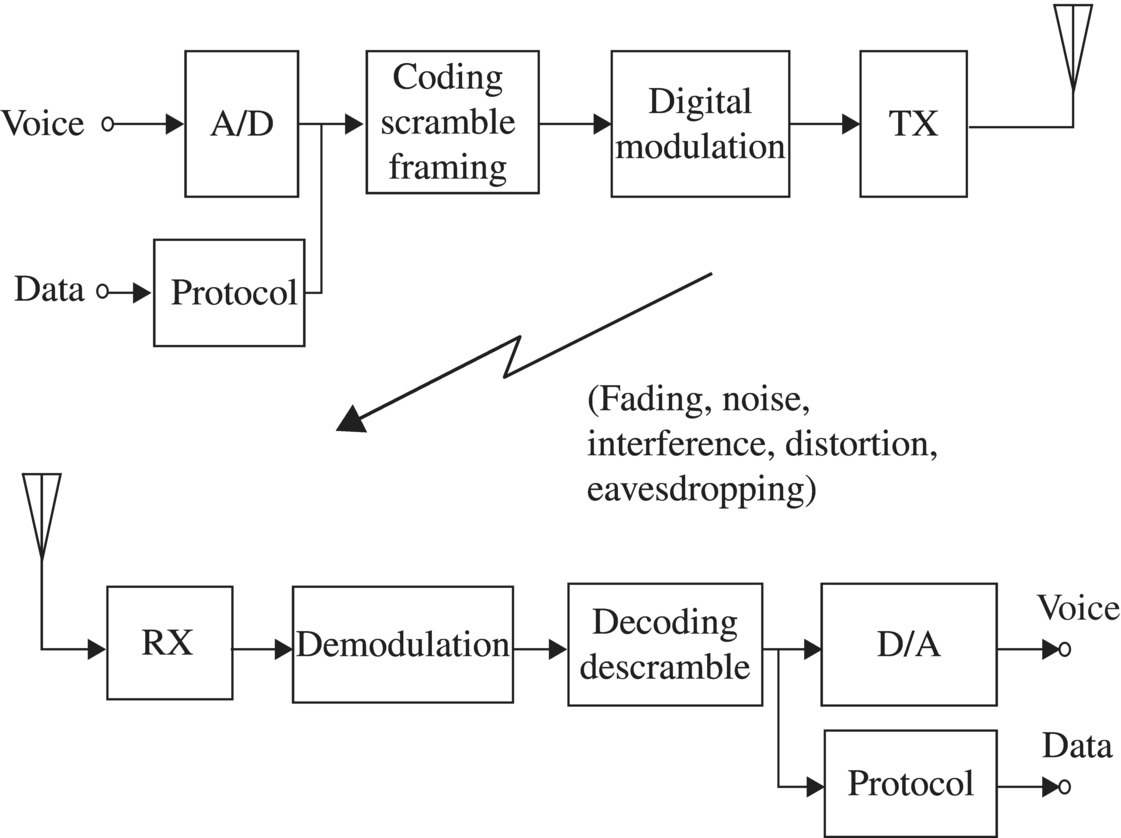1INTRODUCTION
This chapter briefly describes the digital mobile radio communication system and the significance of digitization in mobile radio communications.
1.1 DIGITAL MOBILE RADIO COMMUNICATION SYSTEM
A schematic block diagram of a digital mobile radio communication system is shown in Figure 1.1. A voice signal is converted into a digital signal via a voice coder. The digitized voice signal is transmitted through a digital mobile radio channel and is converted into a reconstructed analog voice signal at the receiver. The target of voice coding technology is to achieve a lower coding rate while keeping an acceptable voice quality. The digital signals are processed by logic circuits for several system requirements: typically, channel coding, scrambling, and framing. Channel coding is a process which inserts additional bits in order to correct or to detect errors in received signals. Scrambling is designed to hide a transmitted signal from a third party by performing a complicated transformation which is known only to an authorized recipient. Framing is a process where information signals are grouped into blocks with other signals as shown in Figure 1.2. The purpose of framing is to multiplex different signals in the time domain (time division multiplexing (TDM)) to introduce channel coding and to make it possible to adopt a synchronized scrambling technique.

Get Introduction to Digital Mobile Communication, 2nd Edition now with the O’Reilly learning platform.
O’Reilly members experience books, live events, courses curated by job role, and more from O’Reilly and nearly 200 top publishers.

